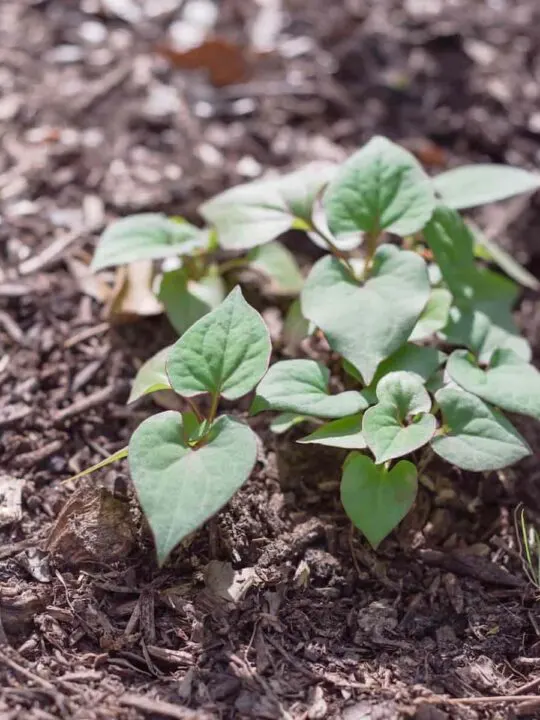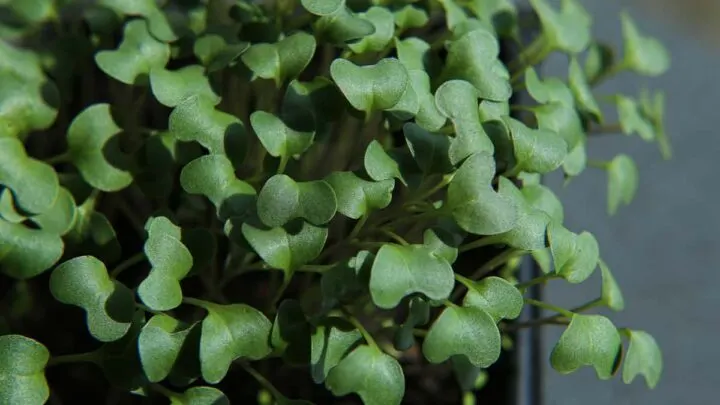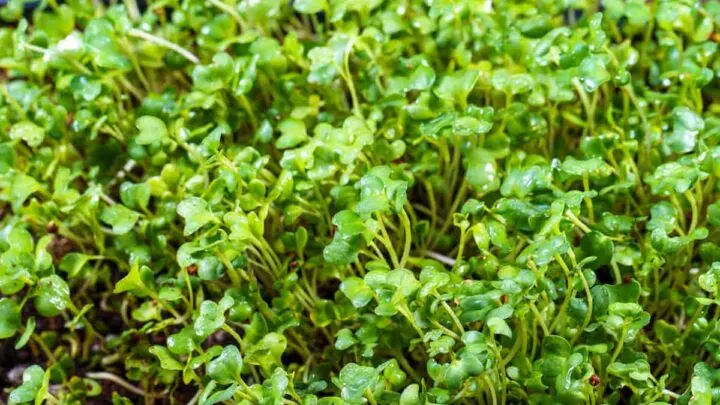Broccoli is a popular vegetable to grow in a garden. Many people start by planting seeds indoors in a window. The seedlings need the right environment to grow strong and healthy. Did the sprouts start well, but now they’re tall and lanky? Why are my broccoli seedlings leggy?
Broccoli seedlings need a lot of sunlight to grow into hardy plants. They will grow towards the available light. When there’s not enough light, the seedlings will become tall and weak as they stretch to the sun. In other words, leggy.
Now that you know why your seedlings are leggy, you may have other questions. Let’s dive in to learn more about these leggy broccoli seedlings, if you can fix the problem, and much more!

What Causes Leggy Seedlings?
The most common cause of broccoli seedlings growing leggy is insufficient light.
Without enough light, the seedlings stretch to reach what light there is rather than using their energy to grow robust stems.
In the world of seedlings, taller is not better. They need strong, sturdy stems with healthy leaves to grow and support the full head of broccoli that you hope for. As the sprouts grow skinny and tall, they become top-heavy and start to fall over.
Developing sprouts need at least six to eight hours of direct light. Even a south-facing window may not provide enough if you’re starting the seedlings in later winter or early spring.
However, if the seedlings are getting enough light, the problem can be too much or not enough nitrogen, or it’s too warm for them.
Can I Save My Leggy Broccoli Seedlings?
You can’t make seedlings shorter. But you can probably rescue them if they haven’t wilted or turned white and don’t have black spots.
You will need to provide them with the growing environment that they require to help them get stronger and healthier:
- Plenty of light
- Good soil
- Nutrients
- Correct temperature
If they have already wilted or have black spots, it’s best to start over with new seeds or buy plants from a nursery.

What Can I Do With Leggy Broccoli Seedlings?
Here’s how to help your seedlings get stronger and grow into healthy plants:
Transplant Them
You can plant the seedlings deeper than they are now to prevent them from falling over. Use either a deeper seed tray or put each seedling into its own small pot.
You can transplant broccoli seedlings halfway up the stem or even closer to the leaves. You want them to be able to stand on their own.
Make a hole in their new soil to cover the stem as much as needed. Gently dig up the seedlings, being careful not to damage the delicate roots. Fill in with soil around each one and water.
Cut Them Back
If your seedlings have fallen over, you can cut them back to the first true leaves. Then transplant them or add more soil around them to give them support. Put a stake next to each plant if necessary.
The first leaves that appear are called ‘seed’ leaves. True leaves are heart-shaped and larger than the seed leaves.
Check the staked plants regularly to see if any adjustments are needed. You can remove the stake once the plants are strong enough to stand on their own.
Supply the Light They Need as Soon as Possible
You can use a grow light to ensure your seed tray or pots are receiving enough light. Depending on the number of plants you have, you can use a single bulb or one of the available grow light kits or systems with one or more shelves and LED lights.
Place a fluorescent light a few inches above the seedlings. For LED lights, follow the instructions that came with them. Adjust the light’s height as the seedlings grow.
You can use a timer and give your young plants 12 hours of light. 14-16 hours is even better. Set the timer so that there are 8 hours of darkness at night.

Adjust the Nitrogen Level in the Soil
If your seedlings receive the light they need to thrive, look at the leaves. If they are yellow, this can mean there’s too little nitrogen. You can correct this by using a fertilizer containing nitrogen.
Otherwise, for weak seedlings, use a fertilizer low in nitrogen and high in phosphorus to counter having excess nitrogen. Water thoroughly and regularly.
Turn off the Heat Mat
If you’re using a heat map, turn it off or lower the temperature. It’s only needed for seed germination. Warmth encourages growth, but your seedlings are already too tall.
For broccoli, only add heat if the soil temperature falls below 65 degrees Fahrenheit.
Help the Seedlings Grow Stronger
Thinning out seedlings to one plant per container will eliminate competition for light and nutrients.
Once the broccoli seedlings have a pair of true leaves, they should be thinned out. Using scissors is safer than trying to pull one out.
Air movement helps the stems grow hardier. You can use a fan on low to provide a gentle breeze. Alternatively, brush your hand over the seedlings a few times a day.
Give them fertilizer and water from the bottom. Once the seedlings are a few weeks old and have one or two sets of true leaves, it’s time to feed them. Dilute a liquid fertilizer and add it to the lower tray to absorb it from the bottom. This will encourage the roots to grow deep.

How Do You Keep Broccoli Sprouts From Getting Leggy?
As you’ve seen, broccoli seedlings need lots of light to grow into vigorous plants.
Although the seeds don’t require light to germinate, they need all that light to develop properly as soon as they emerge from the soil. Even a day or two without light will cause them to get leggy.
To ensure the plants have the best start, some people will place their seed trays in a sunny window or set up their grow lights as soon as they plant the seeds.
When the sprouts emerge from the soil, remove any cover used to help with germination.
Using a good quality starter mix will give the seedlings the appropriate nutrients. Regular watering but not allowing the sprouts to sit in wet soil will also provide them with a good foundation.
The additional tips for making leggy seedlings stronger are also best for non-leggy seedlings.
Final Thoughts
Leggy seedlings aren’t an uncommon problem for gardeners. Now you know what causes them, and you’ve learned that there are ways to save them and help them grow into sturdy plants, so you don’t have to start over with new seeds.
You’ve also learned ways to prevent them from getting leggy in the first place, so your crop next year will start off right.
Broccoli is a delicious and versatile vegetable that comes in many varieties. Now you’re ready to grow big, healthy plants that will produce a large head of delicious broccoli for you to enjoy.

Hi there, my name is Allie and welcome to my blog; GareningWithAllie!
Much of what you see written here is just our personal experiences with gardening. Along with the content I write here, there is also a unique collection of gardening topics covered by some of our close friends. I hope you find everything you read here to be helpful, informative, and something that can make your gardening journey the most lovely experience ever! With that said, Happy Gardening!
